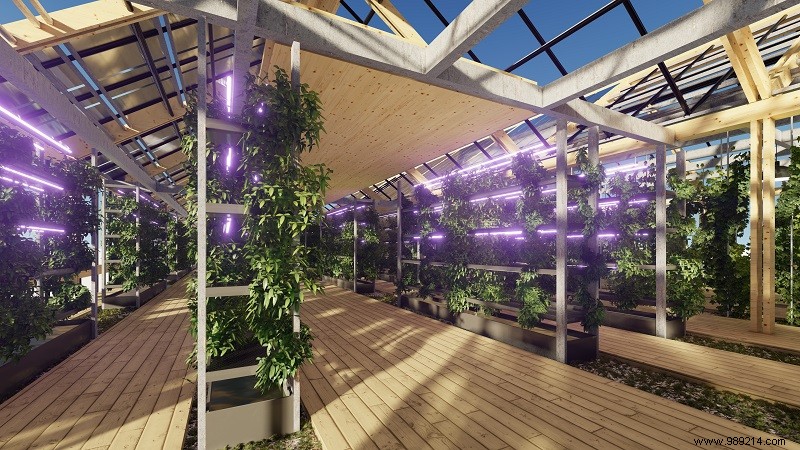In the midst of the current health crisis, an architect has IMAGIN2 new homes and even an entire "post-Covid" neighborhood. This is a project focusing on self-sufficiency, integrating different notions such as community life, food and energy autonomy and teleworking.
With the appearance of the SARS-CoV-2 coronavirus, many cities were placed in quarantine, and therefore practically cut off from the world. As Cities Today magazine explains, Spanish architect Vicente Guallart is behind a self-sufficient neighborhood project to keep it running even in the event of a pandemic. The architect won a competition launched by the Chinese government before the health crisis. It was about imagining the new city of Xiong'an, located about 100 km south of the capital Beijing. Vicente Guallart and his team therefore developed this project during the crisis and imagined these "post-Covid" buildings.
It's about a neighborhood that can accommodate 3,000 people and which could, according to the architect, be compared to the different layers of an onion. Indeed, the project focuses on the scale of housing, but also that of the building, the neighborhood and then the city in general. Vicente Guallart developed his project based on the observation that the current crisis has shown our weakness in the face of disasters . According to him, it is therefore necessary to create structures, cities and buildings that allow us to be stronger as individuals as well as as communities.


Each building includes housing, but also greenhouses to ensure food self-sufficiency . There is also a market, offices, a kindergarten, a swimming pool and a fire station. It is also a question of energy autonomy, but above all of a return of industry to the city. Vicente Guallart took as an example here the shortage of masks and the reaction of many people and companies who launched their productions to save lives.
The architect also thought about the individual and the disruptions in lifestyles due to the coronavirus. Thus, the project integrates the notion of telework, but also of school at home. However, this involved rethinking the space , a problem that emerged during confinement. Thus, it is now more a question of openings to the outside, whether it is terraces extending the living room, but also greenhouses, gardens and recreational spaces at roof level.
Here is a presentation video published by Cities Today: